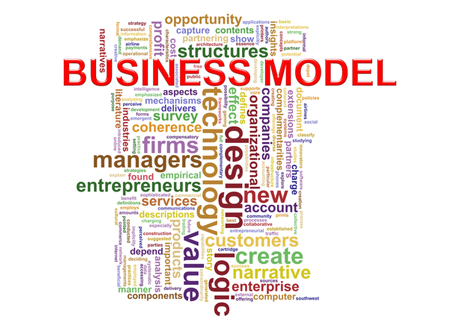What to Tell Your Boss When You Make the Case for Innovation Management
The term “innovation management" has been around for a long time (at least since the 1980s – if not before), but for many business leaders establishing a sustainable innovation management program is still a new concept. Executives aren’t sure what skills they need, who should be on their team, what activities are essential to success, and who they need to partner with.
Five Innovation Practices for Building & Managing an Innovation Program
There is no “one size fits all” formula for innovation management success. Demystifying innovation takes experiments and practices. In this article, we'll explore five tactics to use in order to develop and manage a successful innovation program.
Recession, Innovation and Survival – A Lesson from Kellogg’s
In times of severe recession should you cut costs and focus on survival or take the opportunity to invest in innovation so that you can benefit from the eventual recovery? Let's have a look at a case study of Kellogg's, which took a leap to invest in a new type of cereal - and that paid off even in the face of extreme adversity.
Reinventing the Consulting Business Model
The traditional consulting business model is based on two principle ideas: (1) hiring people (top talent if possible) and (2) charging clients a fee per hour or day for gaining access to this talent, its expertise and/or manpower. Depending on the type of consulting or the brand, the pendulum swings more towards focusing on providing, and buying on the customer side, the more sophisticated expertise or the simpler manpower.
The Creative Destruction of Your Job
The rise of crowdsourcing, crowdfunding, crowdtransporting, crowdletting, etc., has transformed our economy. It has also ushered in the era of the shared economy. Previously marginalized people can now contribute, no matter how small, to all walks of life. It seems to be a fantastic opportunity for the world to access the untapped skill of the crowd. But what about the people whose jobs this makes redundant? Whither the expert?
5 Ways To Prepare Your Business For The Future
Thanks largely to rapidly expanding technologies, planning for the future is more important than ever in business. With thorough preparation and some strategic initiative, your business can position itself to take advantage of some of the inevitable changes that are on the horizon for companies across all industries. Here are five ways to get started.
From “Premium” to “Good Enough”: Frugal Innovation in the Emerging Markets
Frugal engineering means developing simple products for emerging markets and is becoming increasingly important for many companies. Frugal products are not cheap or inferior, they are simplified and yet qualitatively robust. But how can frugal products be developed successfully?
Disruptive Innovation Methodology: K³.P.I.
How does the disruptive machine work? In this article Alex Chenevier offers a consolidated view of his previous publication, (before introducing his disruptive innovation methodology) by recording his research itinerary and extracting three intertwined progresses (the knowledge space, the path dependency and knowledge fusion), ultimately surfacing a unified model. The scientific equation of K³ey Performance Indicator℠ is perhaps the first definite, quantifiable and measurable model, and therefore applicable in business terms.
10 Guidelines for Business Model Innovation in Established Companies
Leading CEOs worldwide expect major changes to their company’s business model until 2020. As a consequence, organizations are currently about to realize that, today, business model innovation has become as important as technological innovation. However, developing new and viable business models still represents a serious challenge for large incumbent firms despite their resources, know-how, and key technologies. This article provides 10 guidelines for mastering business model innovation challenges in established companies.
25 Steps to Jump-Start your Innovation Journey
We’ve covered some essential ground to help you prepare your innovation journey, and now it’s time to put these concepts into action. The innovation formula addresses the very specific tasks that have to be accomplished for innovation to emerge from your organization not only as a matter of luck or at random, but through a concentrated effort that results in sustained innovation performance. Here you will find the Taking Action steps along with 25 additional suggestions that we hope will help you to think and plan creatively and productively about how to make innovation a reality in your organization.
Taking Action: Your Innovation Master Plan
The focus of the The Innovation Formula is on the innovation process that makes sense for small businesses, where lean, simple, and fast are essential. You may also be interested in a view of the innovation process that’s suited to larger companies, so this chapter provides an overview of the Innovation Master Plan framework that we use when we’re working with larger organizations on innovation projects and initiatives.
Systematizing Breakthrough Innovation: Study Results
Most companies recognize the need for breakthrough innovation – it can change the fundamental bases of competition, “rewrite the rules” of an industry and transform the prospects of the successful innovator. There is no one-size-fits-all model for how best to respond to this challenge. Arthur D. Little surveyed over 80 large organizations to explore how to deliver a consistent pipeline of radically new products, performance features, business models and market space.
The Value of Incremental Innovation
In my first article in this series, I talked about the continued, and often misplaced, focus of corporate innovation leaders on developing disruptive innovation efforts. My basic argument within the article was the while “Big I” innovation can be a valid driver of growth. However, few companies are in the right position or have laid the appropriate groundwork to support and develop new, groundbreaking ideas, especially in the context of the existing organizational culture.
Innovation in the SME and Entrepreneurial Context
Innovation is as important for small business as for large ones, but most of the books and other writings available focus on the big firms. In his new book The Innovation Formula, Langdon Morris provides insights for the small business leader or entrepreneur about how to be fantastically successful at innovation even with very limited time and capital to invest.
Innovation Stakeholder Management: Gain Success From My Failure
In the second article on innovation stakeholder management, Anthony Ferrier focuses on two examples where he tried to generate broad support for innovation efforts with varying degrees of success. The lessons learned from these experiences provide insights for practitioners to successfully navigate stakeholder relations.
Game-changing Innovations are Right in Front of You, So Why Don’t You See Them?
Your greatest innovation opportunity may be right in front of you. The problem is you don’t see it. Every day for the last decade of your life this problem has annoyed and frustrated you. Its solution is worth billions of dollars and would open up a totally new market. The problem is, like the millions of other people who have this problem, you don’t think of it as a problem anymore. You’ve been desensitized. You’ve lost your ability to innovate because of something called habituation.
Embrace or Ignore Innovation Stakeholders: A Perspective on Corporate Antibodies
The accepted approach for Corporate Innovation leaders is to secure buy-in from all stakeholders, in order to secure success. This article (first in a series) argues against this approach, aiming for a more tempered effort, that seeks enough buy-in to push forward.
Mind Mapping for Business… Are you Serious?
Time and time again I get asked and challenged on an age-old issue of whether or not mind mapping is, at worst, just another fad, a ”nice to have” or, at best, a real value-adding benefit that has a serious place within a business or organisation.
Hyperselect – Identifying Top Ideas and Projects with Higher Precision
Clear separation of top ideas from mediocre and weak ideas is essential, before financial and other resources are allocated. The Hyperselect method provides a new, sound and improved way to fulfill this task. Moreover it reveals, that hyperbolas might be “the better matrix” in quite a lot of methods for prioritization and beyond.
4 Ways To Encourage Innovation In Your Startup Business
As the market becomes saturated, it becomes difficult for many businesses, especially startup enterprises, to stay on top of their competitions. Technology has paved a way for firms to revolutionize their marketing and management strategies. Another tried and tested way to infiltrate their specific markets successfully is to inspire innovation within their offices, from employees to their brand.
Be Ready for the Next Major Technology Shifts in Your Industry
Technological and industry shifts are important drivers of innovation. Look no further than the advent of the mobile broadband Internet and the shift to the era of intelligent, connected devices. Even though shifts are difficult to anticipate, they often lead to fundamental business changes. Staying up to date with these changes is vital.
Overcoming the Challenges to Successful Open Innovation
Before any organization can reap the economic benefits of open innovation, it must overcome a number of legal, operational and cultural challenges. In this article Peter von Dyck addresses the top three obstacles to open innovation: managing intellectual property issues and other legal risks, processing ideas quickly and establishing an efficient internal structure.
Innovation is not always nice to have. Unless you play-to-win!
Because of today’s business hype for innovation we encounter situations where there can be too much of a good thing going on and successful companies tend to be aware of this potential pitfall. As much as a complete lack of innovation will lead to failure in an organization, left unmanaged, too many innovative ideas can cloud the judgement on which ideas are truly great. Innovation management therefore is crucial in the success of any organisation.
An Innovation Portal…I Can Do That Myself
Innovation portals have taken an important place in the open innovation landscape. Expectations are great in portal performance but often, for purely budgetary reasons, these portals are launched and managed internally by corporates themselves, to discover that they generate a number of community management issues that they are not used to coping with. Prior to launching a corporate portal it is a good idea to ask a few specific questions on whether to do this internally or through experienced third party innovation providers. Using external resources can often avoid pitfalls and align the portal success rate to corporate expectations, objectives and ambitions. Here six questions are asked that can help you take the decision whether to launch a managed portal internally or externally.
Starting an Innovation Program? A Strategic Approach to Create Success
Many innovation leaders tend to be tactically driven, but their corporate leadership is looking for more strategic planning and analysis. This tension often contributes to high turnover in innovation management roles, based on a misalignment around leadership’s expectations. In this article Anthony Ferrier suggests perspectives and actions that should be considered part of your innovation strategy plan.
3 Ways To Scale Up Your Business In 2015
In 2014, you did all the right things and your business began to take off like a Harrier Jump Jet. However, now that you’ve been cruising at a high altitude for awhile, you can either choose to stay on course or go to a new level of elite performance.
Agile Innovation: The Revolutionary Approach to Accelerate Success, Inspire Engagement, and Ignite Creativity
Charles Darwin said it quite well: “In the long history of humankind (and animal kind, too) those who learned to collaborate and improvise most effectively have prevailed.” Innovation, collaboration, and improvisation are indeed essential forces shaping all of business and all of modern life, and they’ve become vitally important for the individual, the organization, and indeed for all of society.
Digging into Your Consumers’ Needs, with Naivety
In an inspiring conversation with Terese Alstin, co-founder of Hövding, the invisible helmet company, Cesar Malacon highlights the innovator’s ability to remain naïve when developing new products and introduces a contemplative approach to find consumers’ real needs.

























